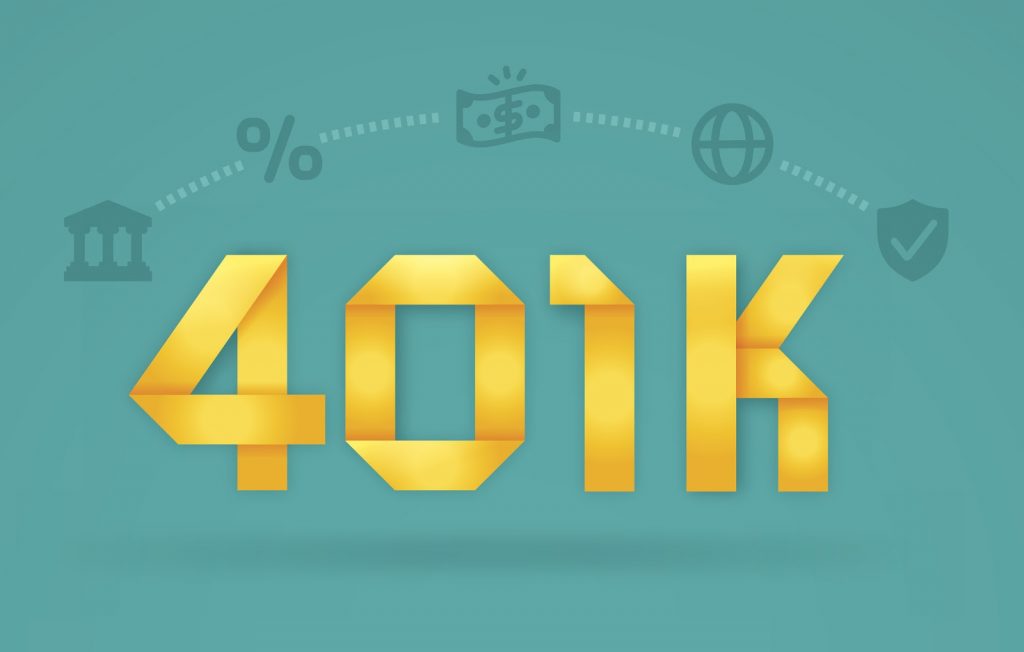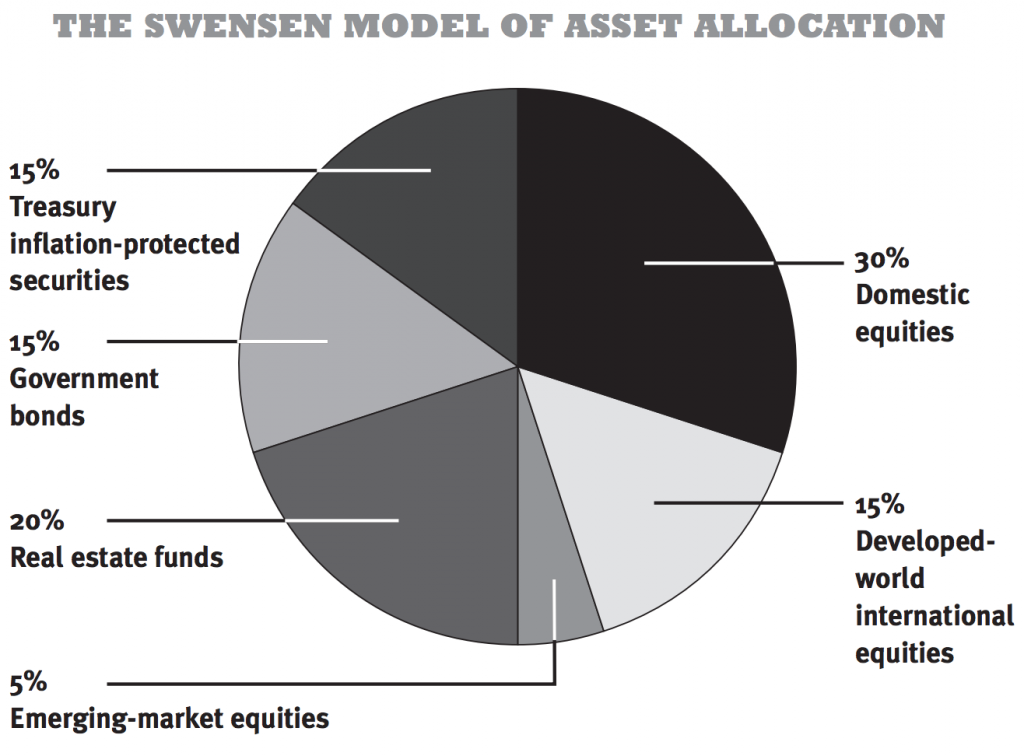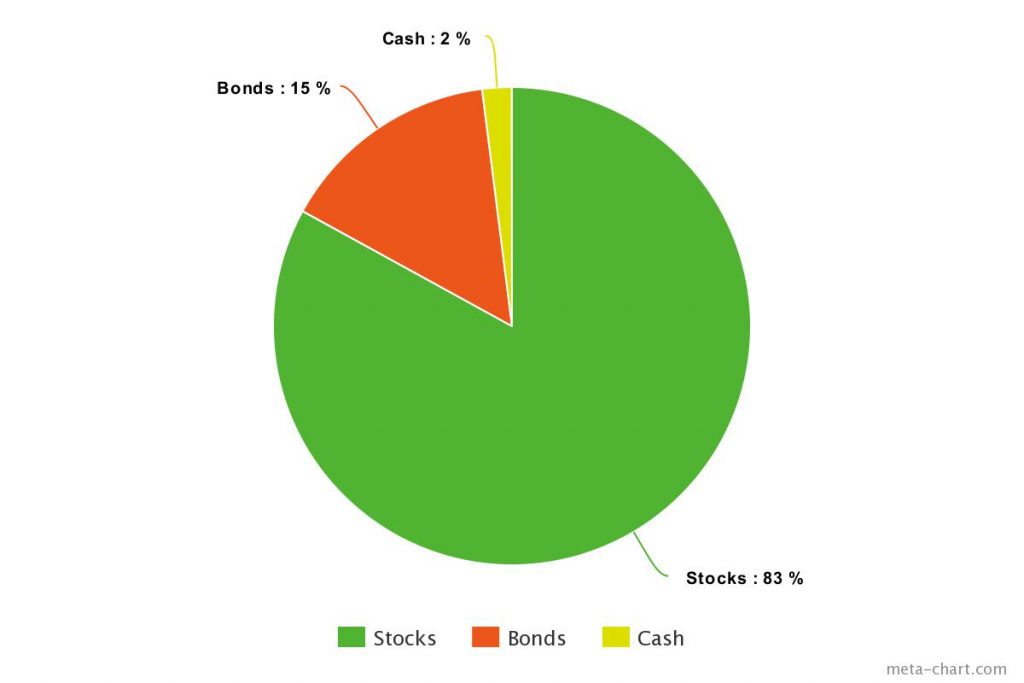At IWT, we talk about 401ks – a lot. (See here, here, or here for proof)
And, that’s with good reason. If you want to be rich, the 401k is one of the most powerful investment tools at your disposal, especially for retirement planning. It is also one of the most misunderstood money-maximizing vehicles, starting with how much you should have in your 401k.
That is a solid question, but it doesn’t have a simple answer. To answer that burning question — How much should I have in my 401k? — we need more details. How much to invest in 401k investments will depend on your age and a few other considerations.
Let’s start at the beginning.

What is a 401k?
A 401k is a powerful type of retirement account that many companies offer to their employees as a perk. With each pay period, you put a portion of your paycheck into the account. It happens automatically so you don’t have to do anything special and there are a ton of benefits.
A 401k is called a “retirement” account because it gives you huge tax advantages if you don’t touch your money until you reach the minimum retirement age of 59 1/2 years. While you will have to pay a penalty if you touch your 401k savings before you reach retirement age, the benefits far outweigh the risk.
Here is a snapshot of the benefits of having a 401k:
Tax benefits
The money you contribute to a 401k isn’t taxed until you withdraw it, which you can’t do without penalty until you reach 59 ½. This means you have much more money to invest for compound growth. In comparison, if that money was invested in a normal investment account instead, a portion of it goes towards income tax.
Also, you have some control over how much you withdraw. With careful planning (definitely talk to your accountant for this one) you can minimize your tax burden (win-win)
Employer match
Most companies offering a 401k will match you up to a certain percentage of your paycheck. In many cases, they will match their employee contributions 1:1. To put that in perspective, let’s say your company offers 5% matching. Now, if you earn $100,000/year and invest 5% of your annual salary ($5,000), your company would match you $5,000 — That doubles your investment without costing you a cent. It’s free money! Not basically free, “like” free, or practically free. It is FREE MONEY and you are leaving it on the table if you don’t take advantage of the employer match. Plus, if you don’t invest in a 401k with employee matching, you are missing out on all the returns that free money will generate. It adds up.
Automated contribution
With a 401k, your money is taken from your paycheck and invested automatically, which means you don’t have to go into a brokerage account to invest each month. You don’t actually have to do anything. Your 401k contribution is deducted from your paycheck the same way that your federal income tax or health insurance premium is deducted. This is an excellent psychological trick to keep you investing.
Check out the graph below that illustrates why you should always invest in your 401k:
| Age | Your Contributions | Employer Match | Balance without Employer Match | Balance with Employer Match |
| 25 | $5,000 | $5,000 | $5,214 | $10,428 |
| 30 | $5,000 | $5,000 | $38,251 | $76,501 |
| 35 | $5,000 | $5,000 | $86,792 | $173,585 |
| 40 | $5,000 | $5,000 | $158,116 | $316,231 |
| 45 | $5,000 | $5,000 | $262,913 | $525,826 |
| 50 | $5,000 | $5,000 | $416,895 | $833,790 |
| 55 | $5,000 | $5,000 | $643,145 | $1,286,290 |
| 60 | $5,000 | $5,000 | $975,581 | $1,951,161 |
| 65 | $5,000 | $5,000 | $1,350,762 | $2,701,525 |
So, one good answer to “How much I should have in my 401k?” is at least enough to get the employer match. And really, there are only two reasons for you NOT to invest in a 401k:
1. You’re trapped on a desert island, and the employee benefits are lacking.
2. Your current employer doesn’t offer a 401k.
What is the maximum 401k contribution amount?
Starting in 2020 (and for tax year 2021), you can contribute up to $19,500 each year to your 401k if you are under 50. If you are over the age of 50, you may be able to make catch-up contributions. This provision lets you invest up to an additional $6,500 in your 401k (tax years 2020 and 2021).
PRO TIP: You need to be behind in your 401k contributions to make catchup contributions.
When compared to a Roth IRA, where you can only contribute up to $6,000/year, this is an amazing opportunity — especially since your pre-tax money is being compounded over time.
How much should you have in your 401k by age?
Now that we have established that you need a 401k in your life and explained how much you can contribute, let’s talk cash. Aside from investing enough to meet your employer match, how much should you have in your 401k, really?
One way to answer that question is to look at your age.
While there is no one-size-fits-all answer to the question, “How much should I have in my 401k?” there are some best practices you can keep in mind to guide your efforts. Yes, while you should start investing in a 401k as soon as possible, some people might not get that opportunity right away — and that’s okay. The point is to do it when you can.
When you do finally start investing, there are a few good rules of thumb to help you make a sound decision on how much you should have in your 401k.
Age 30
Ideally, you should have at least one year’s worth of income in your 401k. That means if you make $60,000, you should have at least that much saved in your 401k.
Age 40
Once you hit 40, you should have at least three years’ worth of income in your 401k. That means if you were making $80,000 by the time you turned 40, you should have at least $240,000 saved in your 401k.
Age 50
When you turn 50, you should have at least five years’ worth of income in your 401k. This means if you increased your income to $100,000, you should have $500,000 saved up in your 401k.
By retirement (age 65)
Once you reach 65, you should have at least eight years’ worth of income in your 401k. That means if you increased your income to $150,000, you should have $1,200,000 saved up in your 401k.
Is your 401k savings on track?
Have you met your mark? If you aren’t there yet, don’t panic. These are just rules of thumb. That means they only give you a rough estimate of what you should ideally have by the time you hit these ages. They do not take into account your individual income and experiences — or other investments you might have in play.
In reality, there’s no one hard answer to how much you should have in your 401k — and anyone who tells you otherwise is either lying to you or just doesn’t know much about finance. We could pull up a bunch of figures and show you how much someone in their 20s or 30s is saving — but that would be a complete waste of time for two reasons:
1. It’s impossible to compare two investors fairly. Everyone has their own unique savings situation. That’s why it’d just be dumb to compare the Ph.D. student saddled with thousands in student loan debt with the trust fund baby who just snagged a cushy six-figure corporate gig the first month out of college. They’re both going to save very differently, so it’s not worth comparing.
2. Most people aren’t financially prepared for retirement. The American Institute of CPAs recently released a study that found that nearly half of all Americans aren’t sure if they’ll be able to afford retirement. That’s even scarier when you consider the fact that many people underestimate how much they’ll need for a comfortable retirement.
So instead of worrying about minutiae like how much you “should have” saved, focus on the future. What’s important is that you:
• Do your research. You are already doing that by reading this article, but don’t stop here. Keep reading. We recommend Investing for Beginners and How Much Do I Need to Retire?
• Be disciplined. This means consistently putting away money and not touching it (except in rare situations — more on that here). Do not treat your 401k as a savings account or an optional expense. Make regular contributions.
• Start early. The best time to get started investing was yesterday. The second best time is right now. Wherever you are in your financial journey, get started as soon as possible. Investments earn returns, but those returns can compound over time.
That’s why it’s so important you understand exactly what your 401k is — and why it’s so important to your retirement strategy.
So, how much should you invest in your 401k?
Okay. So, while investing is highly personal and financial goals should be personalized, you are here so we can teach you to be rich. We have some advice to get you started.
How much you should actually be investing each month depends on a system we call the Ladder of Personal Finance. Check out this video, or read about the Ladder below:
1. Your employer’s 401k match. Each month you should be contributing as much as you need to in order to get the most out of your company’s 401k match. That means if your company offers a 5% match, you should be contributing AT LEAST 5% of your monthly income to your 401k each month.
We’ve already discussed the importance of this – don’t throw away free money and the returns from that free money.
2. Whether you’re in debt. Once you’ve committed yourself to contributing at least the employer match for your 401k, you need to make sure you don’t have any debt. Remember, if you have employee matching, you are effectively earning a 100% return on every penny you invest in your 401k — that is significantly more than the interest you would save by paying down your debt.
If you don’t, great! If you do, that’s okay. You can check out my system on eliminating debt fast to help you.
3. Your Roth IRA contribution. Once you’ve started contributing to your 401k and eliminated your debt, you can start investing in a Roth IRA. Unlike your 401k, this investment account allows you to invest after-tax money and you collect no taxes on the earnings. As of writing this, you can contribute up to $6,000/year ($7,000 if you are 50 or older).
Once you’ve contributed up to that $6,000 limit on your Roth IRA, go back to your 401k and start contributing beyond the match. Remember, you can contribute up to $19,500/year on your 401k if you’re under 50. So, you should have no issue continuing to invest in your 401k. And if you are able to max it out, please be sure to give us a call. We’re going out for drinks — on you.
“But, why would I max out my Roth IRA before my 401k if it’s so good?”
There’s a lot of nerdy debate in the personal finance sphere about this very question, but our position is based on taxes and policy.
Assuming your career goes well, you’ll be in a higher tax bracket when you retire, meaning that you’d have to pay more taxes with a 401k. Also, tax rates will likely increase in the future.
The Ladder of Personal Finance is pretty handy when considering what to prioritize when it comes to your investments, but it is just a tool. For more about the Ladder of Personal Finance and how to make it work for you, check out THIS video where I explain it.
PRO TIP: The video is less than three minutes long. It is worth your time.
Start earning more for a better financial future
The answer to “How much should I have in my 401k?” is an important one — but it’s not the only way to ensure your financial future.
We are going to let you in on a little secret. It is one that has helped thousands of people live their Rich Life:
There’s a limit to how much you can save, but there’s no limit to how much money you can earn.
Many people don’t understand this and because of that, they’re content with contributing very little to their retirement accounts. When they actually retire, they’re surprised when their nest egg is a lot smaller than they thought and they have to get a job as a Walmart greeter to pay for their condo.
If you realize that your earning potential is LIMITLESS, you can truly get started working toward living a Rich Life today.
We recommend three ways to start earning more money:
1. Negotiate a salary raise. 99% of people are content with not asking for a salary raise. So if you are willing to negotiate, that puts you in the 1% and showcases to your boss that you’re a Top Performer willing to work hard for more money.
2. Start a side hustle. One of my favorite money-making tactics is starting your own side hustle. We all have skills. Why not leverage those skills to start earning more money in your free time?
3. Practice conscious spending. If you want to be rich, you have to start spending money like a rich person. No, I don’t mean going out and buying a Corvette. I mean spending money consciously so you know exactly how much you have to spend each month — while earning money passively.
We want to help you get started on one of these tactics today: Starting a side hustle.
We know. We know. The word “side hustle” tends to dredge up images of people working odd jobs and late hours, running errands, or making something to sell — but the reality isn’t like that at all! Freelancing is one of the easiest ways to have a side hustle, and you can get started right now.
Living a passive-income lifestyle with little to no work is a fantasy. If you are serious about earning additional income, you have to take an active role in your side hustle. Eventually, you may be able to earn money passively — but why would you be content with that. More is more, and we can show you how to get there.
That’s why we want to offer you my Ultimate Guide to Making Money.
We created this all-inclusive guide because we were sick of the awful advice that we found masquerading as legitimate money-making tips.
Stuff like:
• “Earn $100k a year in 4 hours a day.”
• “You can make money by joining an MLM opportunity.”
• “You just need to learn to live within your means.”
UGH.
No. You cannot expect to earn that much money with only a few hours of work when you are just getting starting.
If you can earn $100k per year in 4 hours a week, why would you only 4 hours a week? We want to maximize earns AND have a good quality of life.
MLM opportunities and other ready-made side hustle solutions only make money for the people selling them. You can make more as a freelancer than you would from any of those pre-fab solutions.
Living a good life can mean going outside of your budget. If you are working late hours at a side hustle, you may need to have a sandwich for dinner to get it all in before bedtime or you may opt to order takeaway from a restaurant instead of taking the time to cook. There is nothing wrong with that. Your Chinese delivery or sandwich ingredients cost maybe $10. If you are earning $400 on your side hustle and that convenience means you can work through the evening, it makes cents (see what we did there?)
Enter your info below and get the PDF for free today — and start the extra money you need to make your retirement goals come true.
100% privacy. No games, no B.S., no spam. When you sign up, we’ll keep you posted
How Much Should You Really Have in Your 401k (by age) is a post from: I Will Teach You To Be Rich.
Via Finance http://www.rssmix.com/


